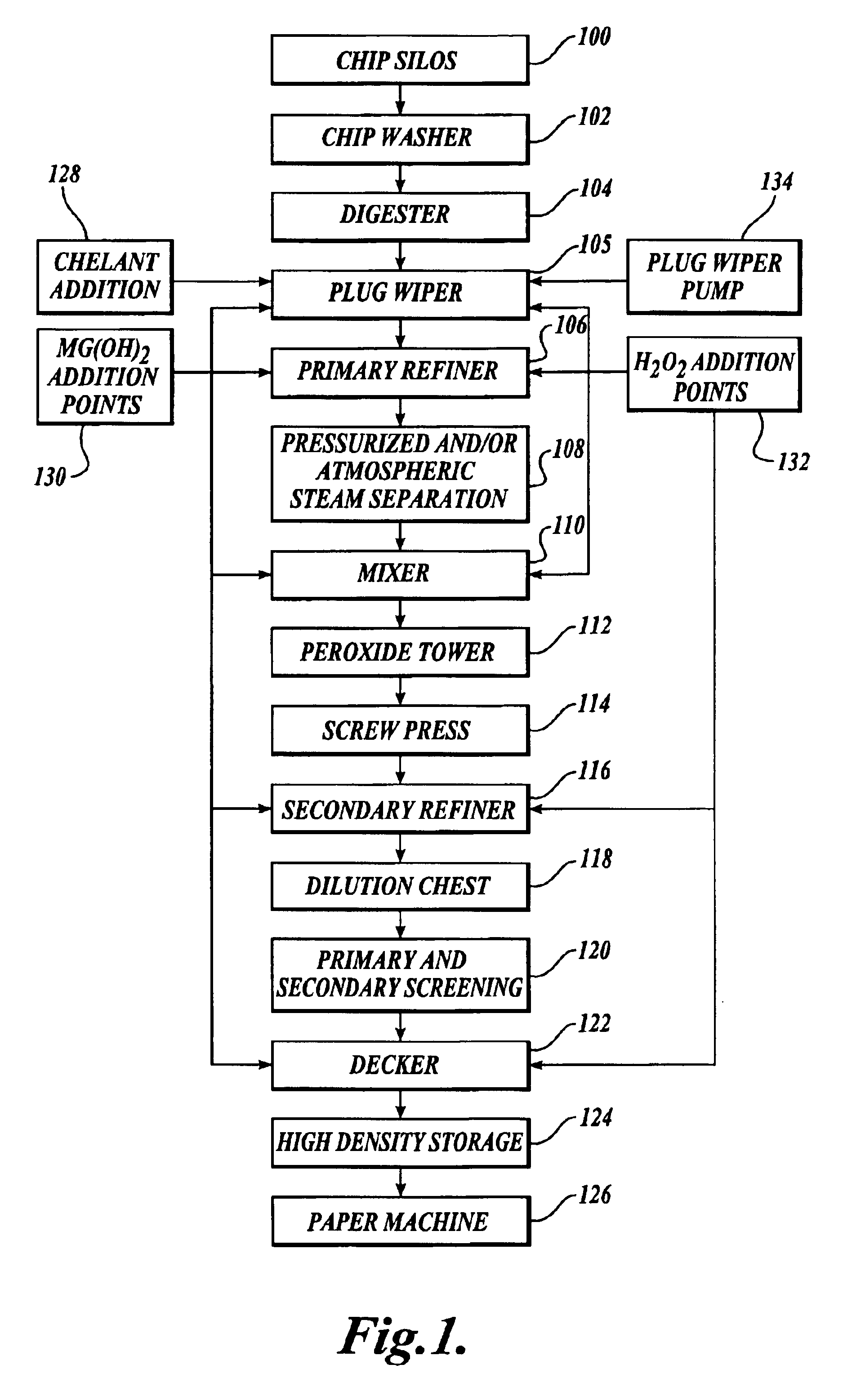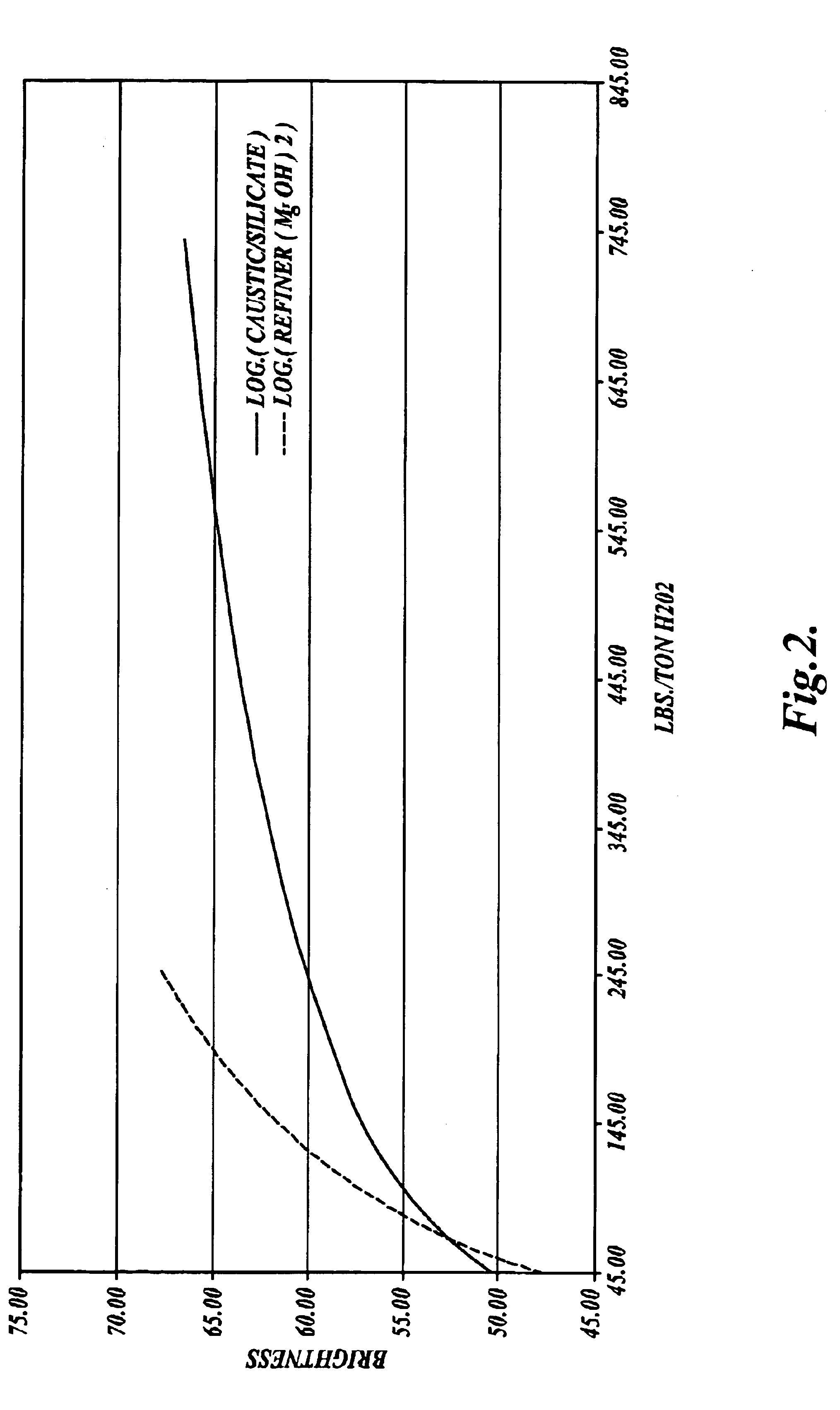Refiner bleaching with magnesium oxide and hydrogen peroxide
a technology of which is applied in the field of alkaline bleaching of pulps with magnesium oxide and hydrogen peroxide, can solve the problems of inability to add sodium hydroxide to the refiner, scale forms tenacious deposits on the equipment, and problems with the paper press, so as to reduce the use of sodium silicate, reduce the effect of paper machine retention
- Summary
- Abstract
- Description
- Claims
- Application Information
AI Technical Summary
Benefits of technology
Problems solved by technology
Method used
Image
Examples
example
[0038]Experimental work was carried out to demonstrate the benefits of hydrogen peroxide bleaching with magnesium hydroxide as compared with sodium hydroxide / sodium silicate in a series of bleaching tests where a temporary equipment setup was used to supply chemicals to a commercial refiner. In this example, a pressurized mechanical double disk refiner was used, however, other pressurized and atmospheric high consistency refiners will give similar results. The chemical application process and testing is described below. The results using magnesium hydroxide were compared to historical production data that used sodium hydroxide / sodium silicate from the same refiner and test equipment.
[0039]Wood chips were processed at the rate of 7 tons / hr through the chip washer and digester shown in FIG. 1. The chips were fed to the feeder where chelants like DTPA were added at the rate of 3 lbs / ton. Plug wiper water was added to control consistency. Before the addition of the plug wiper water, a 6...
PUM
| Property | Measurement | Unit |
|---|---|---|
| temperature | aaaaa | aaaaa |
| pressure | aaaaa | aaaaa |
| operating pressure | aaaaa | aaaaa |
Abstract
Description
Claims
Application Information
 Login to View More
Login to View More - R&D
- Intellectual Property
- Life Sciences
- Materials
- Tech Scout
- Unparalleled Data Quality
- Higher Quality Content
- 60% Fewer Hallucinations
Browse by: Latest US Patents, China's latest patents, Technical Efficacy Thesaurus, Application Domain, Technology Topic, Popular Technical Reports.
© 2025 PatSnap. All rights reserved.Legal|Privacy policy|Modern Slavery Act Transparency Statement|Sitemap|About US| Contact US: help@patsnap.com


